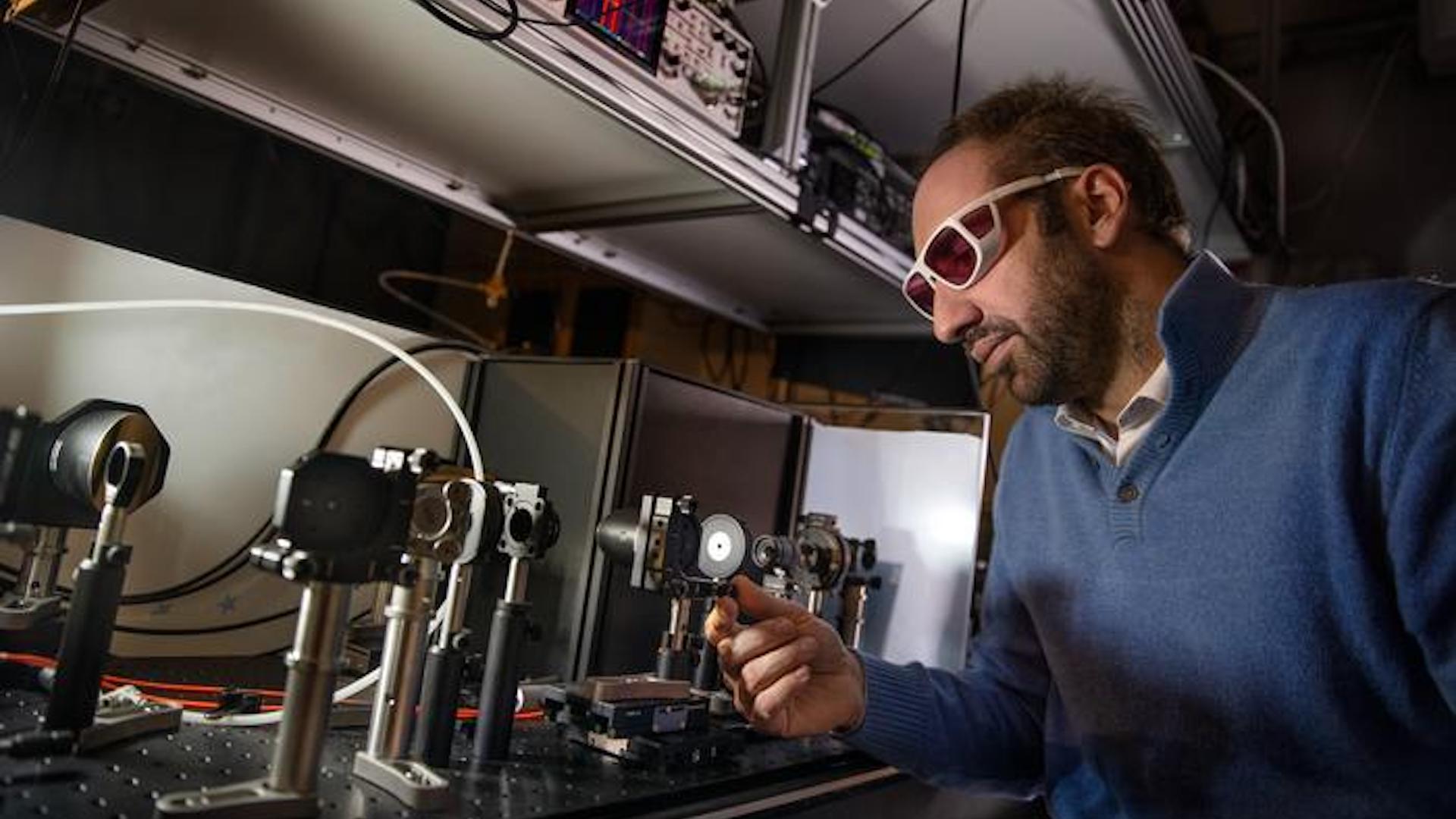
For the first time, scientists have magnetized a non-magnetic material at room temperature, inducing a quantum property that they say could pave the way for ultra-fast computing.
The "switchable" magnetic field could one day be used to store and transmit information. This was something previously only possible at ultracold temperatures.
The results pave the way for "ultra-fast magnetic switches that can be used for faster information transfer and considerably better data storage, and for computers that are significantly faster and more energy-efficient,” study lead author, Alexander Balatsky, professor of physics at the Nordic Institute for Theoretical Physics (NORDITA), said in a statement.
Scientists have long wanted to harness the weird laws of quantum mechanics to improve computing systems, for example in quantum computing. But quantum states are delicate, and can easily fall apart, or "decohere," thanks to noise such as thermal vibration, or the random jiggling of atoms.
Related: Weird magnetic 'skyrmion' quasiparticle could be used as a bit in advanced computing memory
To get around this, researchers aiming to create quantum behavior typically cool their materials to near absolute zero. But that makes such systems difficult to maintain and operate.
In 2017, Balatsky and colleagues laid out a theoretical approach to generating a quantum state, called "dynamic multiferroicity," in which electrical polarization induced magnetism in a non-magnetic material. The process involves stirring up titanium atoms in a material in such a way that they generate a magnetic field.

In the new study, published April 10 in the journal Nature, Balatasky's team demonstrated the theory in titanium atoms surrounded by strontium titanate — an oxide created from titanium and strontium. The team transmitted laser pulses that generated circularly polarized photons, or light particles, in a narrow band of wavelengths.
The researchers fired the 1,300-nanometer wavelength infrared laser at the material in femtosecond (a quadrillionth of a second) bursts of 800 microjoules; by comparison, lasers used in hair removal are up to 40 joules – or 40,000,000 microjoules. They focused the pulses onto the material using three parabolic mirrors to create a rounded beam approximately 0.5 millimeters in diameter.
These pulses induced circular motion in the atoms within the material. When left-circularly polarized, the north pole of magnetization pointed upwards, but when right-circularly polarized, the north pole pointed downwards, creating magnetic fields as strong as a refrigerator magnet that can be switched on and off. The magnetic field existed only while the atoms were stirred.
The researchers envision this breakthrough leading to ultrafast magnetic switches that can operate at room temperature — using lasers to control the lattice vibrations of a material. This system could be the basis for transistors in smaller and faster computing systems that no longer require cold temperatures to operate.
This is not the first time scientists have used light to harness the power of magnetism for computing. In January, a separate study used the magnetic component of light to manipulate the magnetism of a solid material, which could lead to ultrafast magnetic computing memory components in the future.







